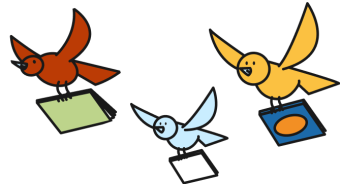
A dream inspires Okan the raccoon to save a white wolf in the mountains of Minnesota, along with a small crew unlikely companions (a skunk and a moose). So begins this action-packed survival story infused with Indigenous creation stories, history, and some Indigenous language.
Wolf Club

A foreword by the founder of the Humanimal Trust sets the stage for a fascinating look at what humans and animals have in common and a call for recognition of our interdependency. The large format is organized in bite-sized chunks of information and clearly illustrated, with additional resources included.
We Are All Animals: Discover What YOU Have in Common with a Cat, a Bat, a Jellyfish, and 150 Other Animals

Max accompanies his mother on a research trip to the Texas Gulf Coast. There he finds a beached octopus and works with others to rescue her. Named Ursula, the octopus helps Max come into his own in this moving, realistic story.
Three Blue Hearts

Have you ever wondered about the world of sound? Why and how do we hear sounds, how does sound travel, and how do birds, dolphins, and humans use sounds to communicate? Discover the answers and much more in this handsome, brief, but surprisingly thorough examination of sound enhanced by expressive illustrations.
Sound: Discovering the Vibrations We Hear

Pocket Bear was created to fit in the pocket of a soldier on the front during World War I. He is now the mascot of a used toy store where stuffed animals are refurbished to be loved again. How Pocket and his friend — a cat who is a burglar — save the store and its owners while building community makes a heartwarming, surprisingly sophisticated, tense tale.
Pocket Bear
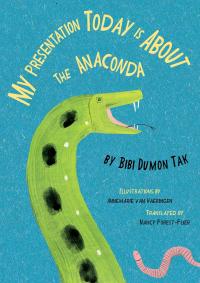
Filled with facts, this fresh approach is sure to delight as well as inform. After all, these are animals presenting oral reports about other animals because “humans only look at things through their own human eyes. Every single time.” Cleaner fish report on sharks; barn owl reports on Tasmanian devil, and mole knows everything there is to know about daddy long-legs. Charming line illustrations punctuate the lively language in this singular book.
My Presentation Today Is About the Anaconda
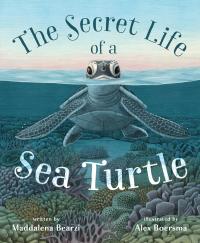
The life of a sea turtle born at the Ría Lagartos nature reserve in Mexico is dramatically presented in realistic yet expressive illustrations and carefully crafted narration. A note from the author describes her interest in wildlife and suggests tangible ways to help sea life. Additional information is also presented.
The Secret Life of a Sea Turtle

The friends Moose and Bear (dogs) and Tiger (a cat), adopted by their human Cathy, are back for another everyday adventure. Short chapters by father and son authors are engaging, accessible, and filled with illustrations.
The Rescues Three Wishes
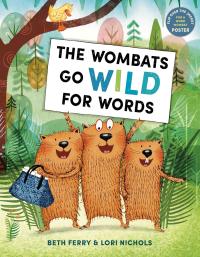
A trio of wandering, word-loving wombats travel through a rather dull forest, enlivening it with wonderful words and inspiring a young duckling. By the end of their travels, the duckling has motivated others and even created a “duck-tionary” which, of course, is included. The animated language and jaunty illustrations are sure to enthuse young wordsmiths.
The Wombats Go Wild for Words
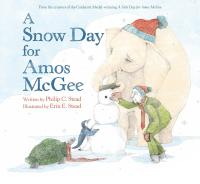
Amos McGee, the old zookeeper from A Sick Day for Amos McGee and Amos McGee Misses the Bus, looks forward to the first snowfall of the season with his animal friends from the city zoo. Together they enjoy playing in snow, ending with hot chocolate for all. The gentle story is enriched by expressive, tender illustrations — another winner from this husband-wife team.
A Snow Day for Amos McGee
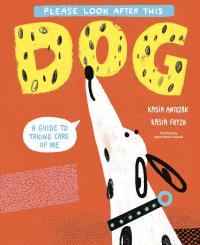
Spot, a Dalmatian dog, and a white cat with tan markings named Dot (from Please Look After This Cat), promote best care practices and understanding basic behaviors. Humor, information, and illustration combine in this engaging presentation. From the Pet Care series — child-friendly and accessible books about common pets that introduce young readers to their care and feeding.
Please Look After This Dog

Tension builds as a small kitten tries to cross the street on a rainy day during a vehicle-dense commute. But it’s a good day to stop to rescue the tiny feline. Evocative illustrations capture the feel of the wet weather and relief as traffic subsides.
Late Today
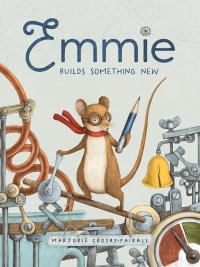
Emmie is a small mouse with big ideas who lives in an attic, using things no one else wanted to make something new. One day, an interloper arrives: a cat. Rather than scheme to get rid of the cat, Emmie makes a new friend. This fresh take on a traditional rivalry is presented in clever Rube Goldberg-esque illustrations and fresh language.
Emmie Builds Something New
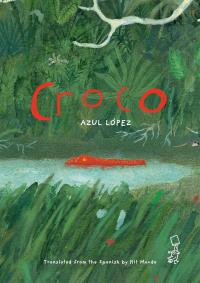
Croco, a crocodile, falls into a deep hole. Other animals offer ideas for how he can can get out, and they even work together to rescue Croco … but to no avail. The croc’s tears, however, do the trick! Lush illustrations are highlighted by the book’s vertical format, for a good-humored tale of friendship.
Croco
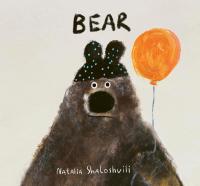
Bear likes his bench, book, cookies, and balloon and is soon asked by friends to share. Bear thinks one way but responds in the name of being polite — until he just can’t anymore! Humor in deadpan expression and the text size of the limited narration together create a witty look at social convention.
Bear

Who ate the little bug? Boldly shaped animals are eliminated with each page turn as die-cut circles decrease in size until the final spread with the ladybug perched on a young nose. This colorful book is presented in a sturdy format with its question and answers.
Who Ate the Little Bug?
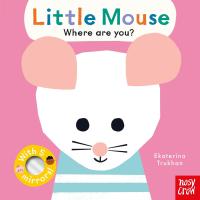
Here are little squirrel, raccoon, hedgehog, and mouse … but where are you? Lift the flap to reveal a small mirror until the final spread. The animals ask where the Little Baby is. Unfold the sturdy page to discover a larger mirror and a greeting from all of the animals.
Little Mouse, Where Are You?
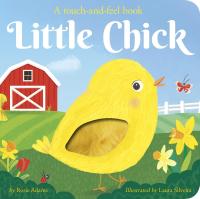
It looks like rain so Little Chick asks different animals for a dry place to wait until it stops. Young fingers can feel the wool of the goat, the chick’s soft feathers, and so on until it finds a place in the cozy barn with a horse.
Little Chick
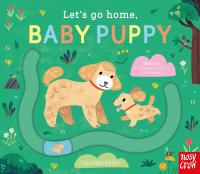
Readers will help baby critters find home as a disc is moved around on the pages of this sturdy board book. Along each short journey, they can identify other familiar items. For young travelers, the same format is used in Make Tracks In the Sky by Johnny Dyrander to introduce five vehicles that fly, one all the way to space!
Let’s Go Home, Baby Puppy
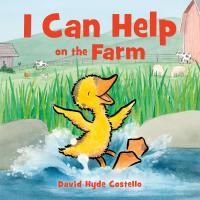
A lost duckling is helped by a dog who in turn needs help. Each familiar animal is assisted by another until the duckling helps the horse find fresh water and begins the story again! Cozy illustrations and repeated text make this just right for young listeners.
I Can Help on the Farm

A guessing game in a book that celebrates the curiosity and delight of a jaunt through a garden, meadow, and alongside a brook. A child steps outside and strolls along, taking in the sights and sounds of nature. Rhythmic, rhyming text tracks his journey through a garden, meadow, and next to a brook, introducing a new color and animal found in that ecosystem with every turn of the page, transforming an ordinary walk into a feast for the senses.
Look and Listen

Children will delight in this fantastic tale of a young girl’s vacation in the Smoky Mountains. Wandering from her tent late one summer’s night, Sara finds an invitation she just can’t resist! She watches the grand ball from safely behind a tree until suddenly she is discovered.
The Great Smoky Mountains Salamander Ball

The Florida Everglades are made up of nine different ecosystems supporting an astonishing variety of wildlife ― panthers, manatees, snails, frogs, and a rainbow of bird species. But for years, the Everglades were threatened. They needed a voice to speak up for them. Marjory Stoneman Douglas became that voice. Her book “A River of Grass” helped the world see the irreplaceable beauty and value of the Everglades. Marjory’s activism led to the creation of a national park and dedicated conservation efforts, and throughout her long life she inspired countless people to use their voices to make a difference.
A Voice for the Everglades: Marjory Stoneman Douglas

A story told in two voices: siblings 12-year-old Josie and her older, disabled brother Abe each have dreams and aspirations. Based on the author’s experience growing up with a comparably challenged brother.
